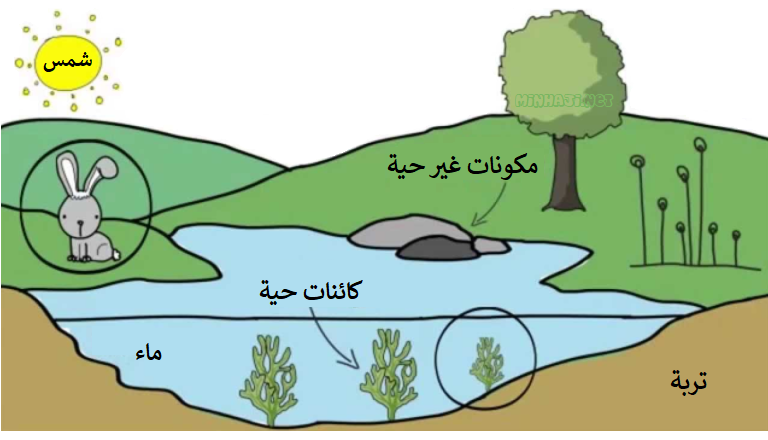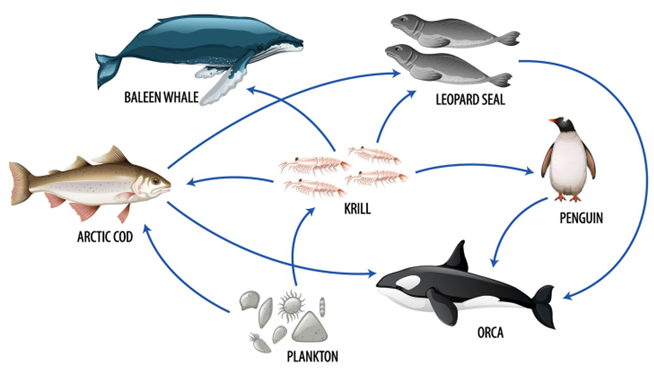 |
Living things in their environments
What is an ecosystem?
Environment: everything that surrounds a living thing, both living and non-living.
Ecosystem: the interaction of living things with the non-living components of their environments.
Components of an ecosystem
An ecosystem consists of two main components:
- Living things, such as animals and plants.
- Non-living components, such as the sun, soil, air, and water.

The concept of a habitat
A habitat: is a place where a living thing lives in an ecosystem.
It is the place where living things find their basic needs of water, air, food, and shelter.
How do ecosystems differ?
Ecosystems vary; some:
- Are on land, such as forests and deserts.
- Are aquatic, such as rivers and oceans.
Terrestrial ecosystems
The desert
- Is characterized by high daytime temperatures and cold nights.
- It is characterized by low rainfall.
- Its soil is sandy and dry.
- Animals such as camels, snakes, lizards, and scorpions live there.
- Plants such as cacti live there.
The forest
- Is characterized by the diversity of living things that live there.
- Its trees are many; due to the abundance of rainfall and the availability of sunlight.
- Animals such as deer, tigers, bears, insects, and worms live there.
Aquatic ecosystems
Saltwater ecosystems
Examples of these are the seas and oceans.
- Its water is salty.
- Many living things live there, such as fish, algae, and coral.
Freshwater ecosystems
Examples of these are ponds and rivers.
- Its water is fresh.
- Many living things live there, such as fish, algae, frogs, and some birds, such as ducks.
Food webs
All living things need food that provides them with the energy they need to grow and survive.
Living things are divided into two types according to their production of food or lack of it:
 Producers
Producers
They are the organisms that produce their food, such as plants and algae.
 Consumers
Consumers
They are organisms that cannot produce their food, but obtain it ready-made, such as herbivores and carnivores.
 Food chain
Food chain
- Producers get their energy from the sun and use it in processes that take place in their bodies.
- When herbivores eat producers, the energy is transferred to them.
- When carnivores eat herbivores, the energy is transferred to them.
- The process of energy transfer from one living thing to another continues in a specific path called the food chain.
Food web
Food chains in any ecosystem overlap to form a food web.
An example of a food web on land:

An example of a food web in water:

Decomposers
Decomposers also live in ecosystems.
Decomposers: organisms that decompose the bodies of organisms after they die; to feed on them.